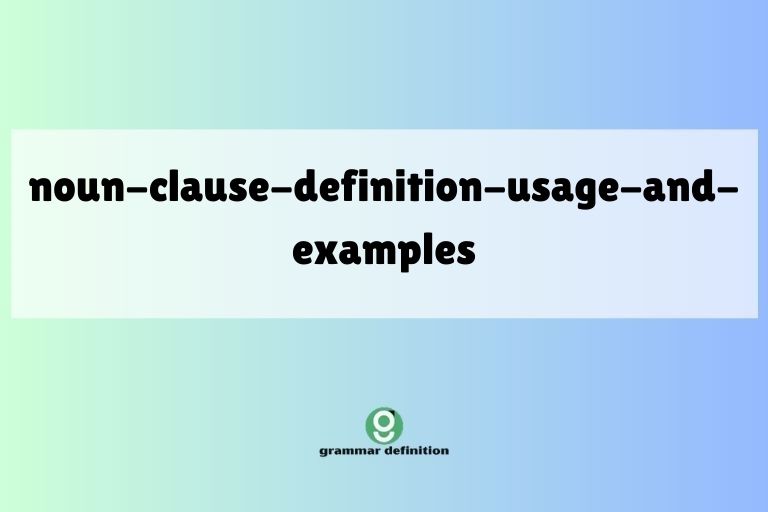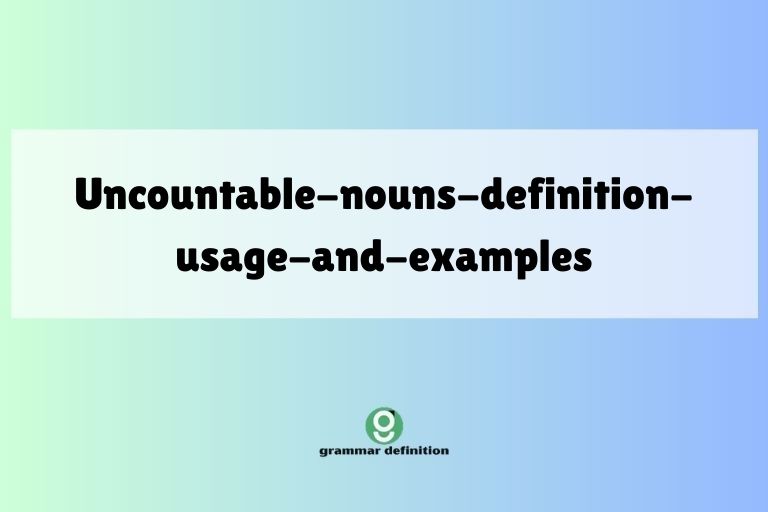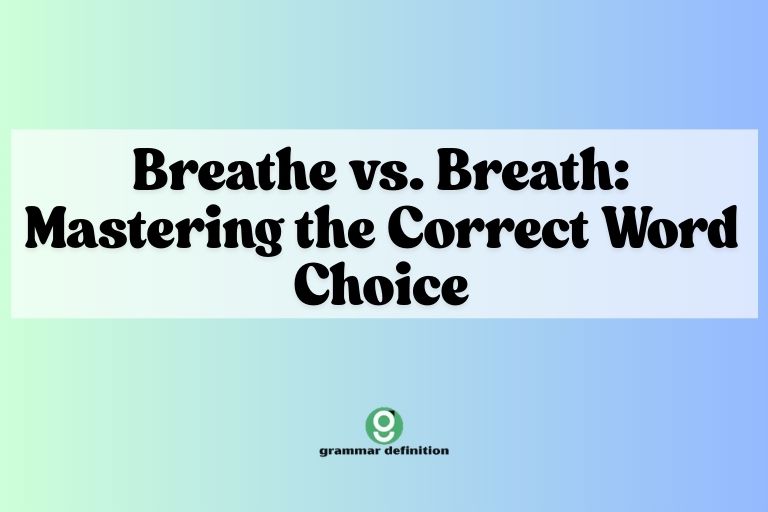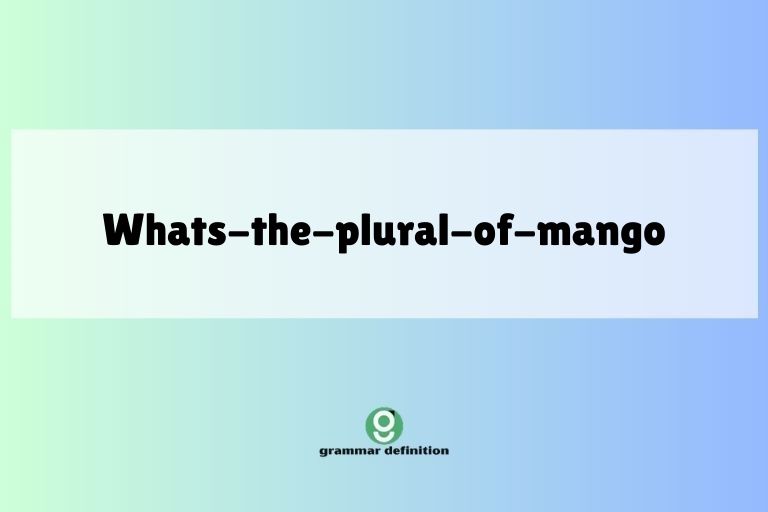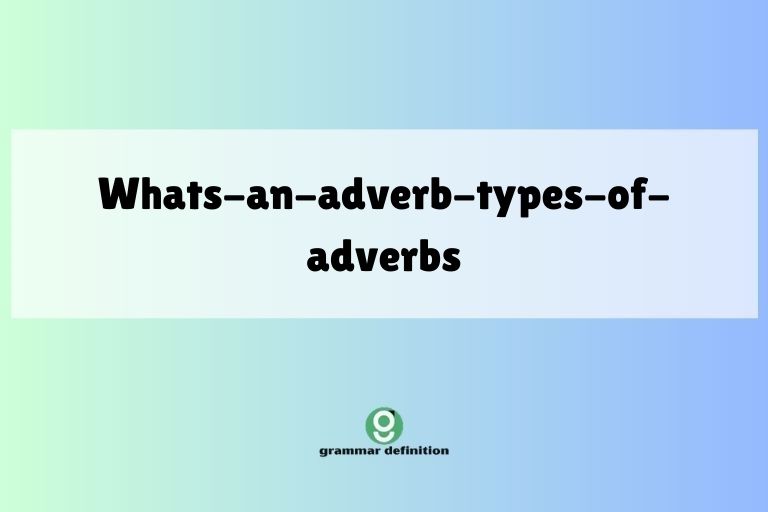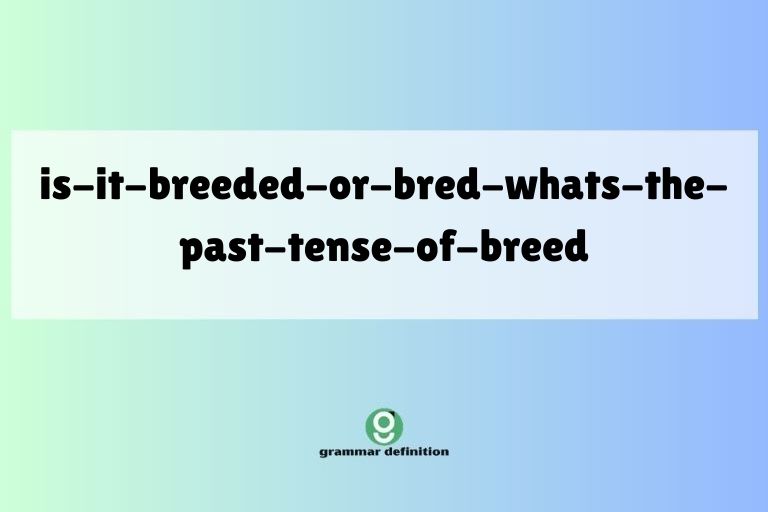Mastering Contractions: A Comprehensive Guide
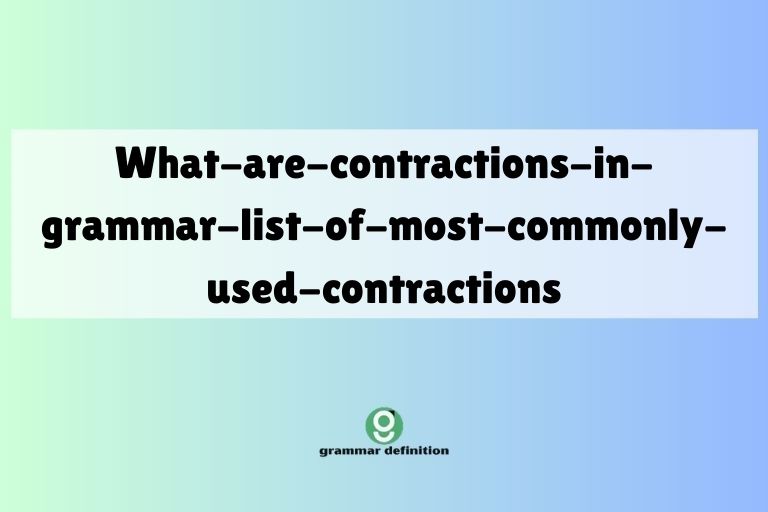
Contractions are an essential part of everyday English, making speech and writing more fluid and natural. Understanding how to use contractions correctly is crucial for clear communication and avoiding common grammatical errors.
This guide provides a comprehensive overview of contractions, covering their definition, formation, usage rules, and common mistakes. Whether you’re a beginner or an advanced learner, this article will help you master the art of using contractions effectively.
Table of Contents
- Introduction
- What are Contractions?
- Structural Breakdown of Contractions
- Types of Contractions
- Examples of Common Contractions
- Usage Rules for Contractions
- Common Mistakes with Contractions
- Practice Exercises
- Advanced Topics in Contractions
- Frequently Asked Questions (FAQ)
- Conclusion
Introduction
In the dynamic landscape of the English language, contractions play a pivotal role in streamlining communication. These condensed forms of words not only enhance fluency but also reflect the informal, conversational nature of much of our daily interaction.
Mastering contractions is essential for both understanding and effectively using English, whether in spoken or written form.
This comprehensive guide aims to demystify contractions, providing a structured approach to learning and applying them correctly. By understanding the underlying principles and common pitfalls, learners can confidently incorporate contractions into their repertoire, improving their overall language proficiency.
This article is designed for a wide audience, from beginners seeking a foundational understanding to advanced learners looking to refine their skills.
What are Contractions?
A contraction is a word formed by combining two words, with one or more letters omitted, usually replaced by an apostrophe. Contractions are primarily used in informal speech and writing to make language sound more natural and conversational.
They help to reduce the number of syllables in a sentence, making it easier to speak and read.
Contractions are not simply abbreviations; they involve a specific process of combining words and omitting letters. The apostrophe indicates where the missing letters would have been.
For example, “cannot” becomes “can’t,” where the “no” is shortened to “n'” and the “o” is replaced by the apostrophe.
In formal writing, contractions are generally avoided, as they can be perceived as less professional or academic. However, in informal contexts such as emails, blog posts, and fiction writing, contractions are widely accepted and often preferred.
Classification of Contractions
Contractions can be classified based on the types of words they combine. The most common types include contractions with auxiliary verbs (e.g., is, are, have, will), contractions with pronouns (e.g., I, you, he, she, it, we, they), and contractions with the word “not.”
Understanding these classifications can help learners identify and correctly use different types of contractions. Each type follows specific rules for formation and usage, which will be explored in detail in subsequent sections.
Function of Contractions
The primary function of contractions is to simplify and expedite communication. By reducing the number of syllables, contractions make speech and writing more fluid and natural.
They also help to create a more informal and conversational tone.
In spoken English, contractions are almost ubiquitous, reflecting the fast-paced and often spontaneous nature of conversation. In written English, the use of contractions depends on the context and the desired level of formality.
While formal writing generally avoids contractions, informal writing embraces them as a way to connect with the reader and create a more relatable voice.
Contexts for Using Contractions
The appropriateness of using contractions depends heavily on the context. In formal settings such as academic papers, business reports, and legal documents, contractions are typically avoided.
The goal in these contexts is to maintain a professional and objective tone.
However, in informal settings such as emails to friends, social media posts, and personal blogs, contractions are not only acceptable but often preferred. They help to create a sense of familiarity and connection with the audience.
In creative writing, contractions can be used to reflect the way characters speak and to add authenticity to dialogue.
Structural Breakdown of Contractions
Understanding the structure of contractions involves recognizing the original words, identifying the omitted letters, and noting the placement of the apostrophe. This knowledge is crucial for forming and using contractions correctly.
Most contractions involve combining two words and replacing one or more letters with an apostrophe. The apostrophe indicates where the missing letters would have been.
For example, in the contraction “isn’t,” the original words are “is” and “not,” and the “o” in “not” is replaced by the apostrophe.
Some contractions involve more complex changes, such as “will not” becoming “won’t.” In this case, the entire word “will” is altered, and the apostrophe is placed after the “n.” Understanding these variations is essential for mastering contractions.
Common Patterns in Contraction Formation
Several common patterns govern the formation of contractions. One common pattern involves combining a pronoun with an auxiliary verb, such as “I am” becoming “I’m” or “he is” becoming “he’s.” In these cases, the first word remains unchanged, and the auxiliary verb is shortened.
Another common pattern involves combining an auxiliary verb with the word “not,” such as “is not” becoming “isn’t” or “cannot” becoming “can’t.” In these cases, the “o” in “not” is typically replaced by the apostrophe, although there are exceptions, such as “will not” becoming “won’t.”
Rules for Forming Contractions
The rules for forming contractions are generally straightforward, but there are some exceptions and special cases to be aware of. The most important rule is to ensure that the apostrophe is placed correctly, indicating where the missing letters would have been.
Another important rule is to use contractions appropriately, depending on the context and the desired level of formality. In formal writing, contractions should be avoided, while in informal writing, they are generally acceptable and often preferred.
Types of Contractions
Contractions can be categorized based on the types of words they combine. The main categories include contractions with auxiliary verbs, contractions with pronouns, and contractions with “not.”
Each category follows specific rules for formation and usage. Understanding these categories can help learners identify and correctly use different types of contractions.
Contractions with Auxiliary Verbs
Contractions with auxiliary verbs involve combining a pronoun or noun with an auxiliary verb such as is, are, have, was, were, will, would, had, or has. These contractions are commonly used in both spoken and written English.
Examples include “I am” becoming “I’m,” “you are” becoming “you’re,” “he is” becoming “he’s,” “we have” becoming “we’ve,” and “they will” becoming “they’ll.” These contractions help to simplify sentences and make them sound more natural.
Contractions with Pronouns
Contractions with pronouns involve combining a pronoun such as I, you, he, she, it, we, or they with an auxiliary verb. These contractions are among the most common in the English language.
Examples include “I’m” (I am), “you’re” (you are), “he’s” (he is), “she’s” (she is), “it’s” (it is), “we’re” (we are), and “they’re” (they are). These contractions are widely used in both spoken and written English to simplify sentences and make them more conversational.
Contractions with “Not”
Contractions with “not” involve combining an auxiliary verb with the word “not.” These contractions are used to express negation and are also very common in English.
Examples include “is not” becoming “isn’t,” “are not” becoming “aren’t,” “was not” becoming “wasn’t,” “were not” becoming “weren’t,” “has not” becoming “hasn’t,” “have not” becoming “haven’t,” “will not” becoming “won’t,” and “cannot” becoming “can’t.” Note that “will not” and “cannot” have irregular contractions.
Examples of Common Contractions
To solidify your understanding of contractions, here are several examples organized by category. Each table provides a list of common contractions, along with their full forms and example sentences.
The following tables offer a comprehensive overview of the most commonly used contractions in the English language. By studying these examples, you can gain a better understanding of how contractions are formed and used in various contexts.
Table 1: Contractions with ‘is’ and ‘are’
This table shows contractions formed with the auxiliary verbs ‘is’ and ‘are’, combined with various pronouns.
| Contraction | Full Form | Example Sentence |
|---|---|---|
| I’m | I am | I’m going to the store later. |
| You’re | You are | You’re a great friend. |
| He’s | He is | He’s coming to the party tonight. |
| She’s | She is | She’s very talented. |
| It’s | It is | It’s a beautiful day. |
| We’re | We are | We’re going on vacation next week. |
| They’re | They are | They’re excited about the concert. |
| Who’s | Who is | Who’s at the door? |
| What’s | What is | What’s your name? |
| Where’s | Where is | Where’s the nearest gas station? |
| How’s | How is | How’s your family doing? |
| That’s | That is | That’s a good idea. |
| There’s | There is | There’s no milk in the fridge. |
| Here’s | Here is | Here’s your coffee. |
| John’s | John is | John’s my best friend. |
| Mary’s | Mary is | Mary’s a doctor. |
| The dog’s | The dog is | The dog’s barking loudly. |
| The car’s | The car is | The car’s parked outside. |
| The weather’s | The weather is | The weather’s nice today. |
| The book’s | The book is | The book’s very interesting. |
| The show’s | The show is | The show’s starting soon. |
| The game’s | The game is | The game’s about to begin. |
| The food’s | The food is | The food’s delicious. |
| My dad’s | My dad is | My dad’s a teacher. |
| My mom’s | My mom is | My mom’s a nurse. |
Table 2: Contractions with ‘have’ and ‘had’
This table illustrates contractions formed with the auxiliary verbs ‘have’ and ‘had’, combined with various pronouns.
| Contraction | Full Form | Example Sentence |
|---|---|---|
| I’ve | I have | I’ve been to Paris before. |
| You’ve | You have | You’ve done a great job. |
| He’s | He has | He’s finished his homework. |
| She’s | She has | She’s already left. |
| It’s | It has | It’s been a long day. |
| We’ve | We have | We’ve decided to go to the beach. |
| They’ve | They have | They’ve lived here for many years. |
| I’d | I had / I would | I’d already eaten when you called. / I’d like to go to the movies. |
| You’d | You had / You would | You’d seen the movie before. / You’d better hurry. |
| He’d | He had / He would | He’d finished the report. / He’d like some coffee. |
| She’d | She had / She would | She’d met him before. / She’d love to come to the party. |
| It’d | It had / It would | It’d been a difficult journey. / It’d be great to see you again. |
| We’d | We had / We would | We’d finished the project. / We’d like to thank you. |
| They’d | They had / They would | They’d arrived early. / They’d be happy to help. |
| Who’d | Who had / Who would | Who’d have thought it? / Who’d like to volunteer? |
| What’d | What had / What would | What’d happened? / What’d you do in that situation? |
| Where’d | Where had / Where would | Where’d you been? / Where’d you like to go on vacation? |
| How’d | How had / How would | How’d you known? / How’d you like your steak cooked? |
| That’d | That had / That would | That’d been a long time ago. / That’d be a good idea. |
| There’d | There had / There would | There’d been a mistake. / There’d be no problem. |
| Here’d | Here had / Here would | Here’d been the solution. / Here’d be the best approach. |
| John’d | John had / John would | John’d left already. / John’d like to come. |
| Mary’d | Mary had / Mary would | Mary’d finished her book. / Mary’d be glad to help. |
| The dog’d | The dog had / The dog would | The dog’d been barking all night. / The dog’d love a walk. |
| The car’d | The car had / The car would | The car’d broken down. / The car’d need repairs. |
Table 3: Contractions with ‘will’ and ‘would’
This table provides examples of contractions formed with the auxiliary verbs ‘will’ and ‘would’, combined with various pronouns.
| Contraction | Full Form | Example Sentence |
|---|---|---|
| I’ll | I will | I’ll call you later. |
| You’ll | You will | You’ll enjoy the movie. |
| He’ll | He will | He’ll be here soon. |
| She’ll | She will | She’ll help you with your homework. |
| It’ll | It will | It’ll be fun. |
| We’ll | We will | We’ll see you tomorrow. |
| They’ll | They will | They’ll arrive on time. |
| I’d | I would | I’d like to go for a walk. |
| You’d | You would | You’d enjoy this restaurant. |
| He’d | He would | He’d prefer to stay home. |
| She’d | She would | She’d love to visit Paris. |
| It’d | It would | It’d be a pleasure to meet you. |
| We’d | We would | We’d like to thank everyone for coming. |
| They’d | They would | They’d be happy to help. |
| Who’ll | Who will | Who’ll be the next president? |
| What’ll | What will | What’ll happen next? |
| Where’ll | Where will | Where’ll we go for vacation? |
| How’ll | How will | How’ll we solve this problem? |
| That’ll | That will | That’ll be enough. |
| There’ll | There will | There’ll be a meeting tomorrow. |
| Here’ll | Here will | Here’ll be your receipt. |
| John’ll | John will | John’ll come to the party. |
| Mary’ll | Mary will | Mary’ll be here soon. |
| The dog’ll | The dog will | The dog’ll bark at strangers. |
| The car’ll | The car will | The car’ll need to be washed. |
Table 4: Negative Contractions (with ‘not’)
This table presents common negative contractions formed by combining auxiliary verbs with ‘not’.
| Contraction | Full Form | Example Sentence |
|---|---|---|
| Isn’t | Is not | It isn’t raining today. |
| Aren’t | Are not | They aren’t coming to the party. |
| Wasn’t | Was not | He wasn’t at home yesterday. |
| Weren’t | Were not | We weren’t invited to the wedding. |
| Hasn’t | Has not | She hasn’t finished her work. |
| Haven’t | Have not | I haven’t seen that movie. |
| Hadn’t | Had not | They hadn’t arrived by the time we left. |
| Won’t | Will not | I won’t be able to make it to the meeting. |
| Wouldn’t | Would not | He wouldn’t agree to the terms. |
| Can’t | Cannot | I can’t believe it. |
| Couldn’t | Could not | She couldn’t hear me. |
| Shouldn’t | Should not | You shouldn’t do that. |
| Wouldn’t | Would not | I wouldn’t recommend that restaurant. |
| Mightn’t | Might not | She mightn’t come to the party. |
| Mustn’t | Must not | You mustn’t touch that. |
| Daren’t | Dare not | I daren’t speak to him. |
| Oughtn’t | Ought not | You oughtn’t to do that. |
| Needn’t | Need not | You needn’t worry. |
| Don’t | Do not | I don’t understand. |
| Doesn’t | Does not | He doesn’t like coffee. |
| Didn’t | Did not | We didn’t go to the beach. |
| Ain’t | Am not / Is not / Are not / Has not / Have not | I ain’t going. / He ain’t here. / They ain’t ready. / She ain’t seen it. / We ain’t done yet. (Note: Ain’t is nonstandard.) |
Usage Rules for Contractions
Using contractions correctly involves understanding the rules governing their usage, as well as being aware of exceptions and special cases. Contractions are generally appropriate in informal contexts, but should be avoided in formal writing.
The most important rule is to ensure that the apostrophe is placed correctly, indicating where the missing letters would have been. Another important rule is to use contractions appropriately, depending on the context and the desired level of formality.
Formality and Context
The level of formality is a key factor in determining whether to use contractions. In formal writing, such as academic papers, business reports, and legal documents, contractions are typically avoided.
The goal in these contexts is to maintain a professional and objective tone.
In informal settings, such as emails to friends, social media posts, and personal blogs, contractions are not only acceptable but often preferred. They help to create a sense of familiarity and connection with the audience.
In creative writing, contractions can be used to reflect the way characters speak and to add authenticity to dialogue.
Exceptions and Special Cases
While the rules for forming contractions are generally straightforward, there are some exceptions and special cases to be aware of. For example, the contraction of “will not” is “won’t,” which is an irregular form.
Another exception involves contractions with the word “have.” When “have” is used as a main verb, it is generally not contracted. For example, “I have a car” is not typically contracted to “I’ve a car.” However, when “have” is used as an auxiliary verb, it can be contracted, as in “I’ve been to Paris.”
Common Mistakes with Contractions
Even experienced English speakers sometimes make mistakes with contractions. Common errors include misplacing the apostrophe, confusing contractions with similar-sounding words, and using contractions inappropriately in formal writing.
Being aware of these common mistakes can help learners avoid them and use contractions correctly.
Confusing ‘its’ and ‘it’s’
One of the most common mistakes is confusing “its” and “it’s.” “Its” is a possessive pronoun, while “it’s” is a contraction of “it is” or “it has.” Using the wrong form can lead to confusion and grammatical errors.
Correct: The dog wagged its tail. (Possessive pronoun)
Incorrect: The dog wagged it’s tail.
Correct: It’s a beautiful day. (Contraction of “it is”)
Incorrect: Its a beautiful day.
Misplacing the Apostrophe
Another common mistake is misplacing the apostrophe in a contraction. The apostrophe should always be placed where the missing letters would have been.
Correct: They‘re going to the store. (Contraction of “they are”)
Incorrect: Theyre’ going to the store.
Correct: I can’t believe it. (Contraction of “cannot”)
Incorrect: I can’t believe it.
Using Contractions in Formal Writing
Using contractions inappropriately in formal writing is another common mistake. In formal contexts, contractions should generally be avoided to maintain a professional and objective tone.
Informal: I’m writing to you today to discuss…
Formal: I am writing to you today to discuss…
Practice Exercises
To reinforce your understanding of contractions, here are some practice exercises. Each exercise includes a set of questions, followed by the correct answers.
Completing these exercises will help you identify areas where you may need further practice and solidify your knowledge of contractions.
Exercise 1: Fill in the Blanks with the Correct Contraction
Fill in the blanks with the correct contraction for the given words.
| Question | Answer |
|---|---|
| I ______ going to the park. (am) | I’m |
| You ______ a great singer. (are) | You’re |
| He ______ finished his homework. (has) | He’s |
| She ______ be here soon. (will) | She’ll |
| It ______ raining today. (is not) | Isn’t |
| We ______ seen that movie before. (have) | We’ve |
| They ______ coming to the party. (are not) | Aren’t |
| I ______ like to go for a walk. (would) | I’d |
| He ______ agree to the terms. (would not) | Wouldn’t |
| I ______ believe it. (cannot) | Can’t |
Exercise 2: Rewrite the Sentences Using Contractions
Rewrite the following sentences using contractions where appropriate.
| Question | Answer |
|---|---|
| I am going to the store. | I’m going to the store. |
| You are a good friend. | You’re a good friend. |
| He is not coming to the party. | He isn’t coming to the party. |
| She will be here soon. | She’ll be here soon. |
| We have been to Paris before. | We’ve been to Paris before. |
| They are excited about the trip. | They’re excited about the trip. |
| I would like to go for a walk. | I’d like to go for a walk. |
| He has finished his work. | He’s finished his work. |
| It is a beautiful day. | It’s a beautiful day. |
| I cannot believe it. | I can’t believe it. |
Exercise 3: Identify and Correct the Errors in Contractions
Identify and correct the errors in the following sentences.
| Question | Answer |
|---|---|
| Its a beautiful day. | It’s a beautiful day. |
| Theyre going to the beach. | They’re going to the beach. |
| He dosent like coffee. | He doesn’t like coffee. |
| I canot believe it. | I cannot believe it. / I can’t believe it. |
| She’s dog is cute. | Her dog is cute. (No contraction needed) |
| Were going to the movies. | We’re going to the movies. |
| Youre right about that. | You’re right about that. |
| Hes finished his homework. | He’s finished his homework. |
| I woudl like some tea. | I’d like some tea. |
| Theyre coming over later. | They’re coming over later. |
Advanced Topics in Contractions
For advanced learners, there are several more complex aspects of contractions to explore. These include regional variations, historical changes, and the use of contractions in creative writing.
Understanding these advanced topics can help learners develop a deeper appreciation for the nuances of the English language and use contractions more effectively.
Regional Variations in Contraction Usage
The usage of contractions can vary depending on the region. Some contractions may be more common in certain dialects of English than in others.
For example, the contraction “ain’t” is more common in some regions of the United States than in others.
Being aware of these regional variations can help learners avoid using contractions that may sound unnatural or out of place in certain contexts.
Historical Changes in Contractions
The use of contractions has evolved over time. Some contractions that were once common are now considered archaic, while others have become more widely accepted.
Understanding these historical changes can
help learners appreciate the dynamic nature of the English language.
For example, contractions such as ” ’tis ” and ” ’twas ” were once common but are now rarely used in modern English. Being aware of these historical changes can help learners avoid using contractions that may sound outdated or out of place.
Contractions in Creative Writing
In creative writing, contractions can be used to add authenticity to dialogue and reflect the way characters speak. The use of contractions can also help to create a more informal and conversational tone.
However, it is important to use contractions judiciously in creative writing. Overusing contractions can make the writing sound too informal or colloquial, while avoiding them altogether can make the dialogue sound stilted or unnatural.
The key is to strike a balance that reflects the characters and the overall tone of the story.
Frequently Asked Questions (FAQ)
When should I avoid using contractions?
Avoid using contractions in formal writing, such as academic papers, business reports, and legal documents. In these contexts, it is best to maintain a professional and objective tone by using the full forms of words.
Is it ever acceptable to use contractions in academic writing?
In general, contractions should be avoided in academic writing. However, there may be some exceptions, such as when quoting direct speech or when writing in a more informal style for a specific audience.
Always check the guidelines of the publication or assignment to determine whether contractions are acceptable.
What is the difference between “its” and “it’s”?
“Its” is a possessive pronoun, while “it’s” is a contraction of “it is” or “it has.” “Its” is used to show ownership, while “it’s” is used to combine “it” with the verbs “is” or “has.”
Are there any contractions that should always be avoided?
While most contractions are acceptable in informal contexts, some contractions, such as “ain’t,” are generally considered nonstandard and should be avoided in formal writing.
How can I improve my understanding of contractions?
To improve your understanding of contractions, practice using them in your writing and speaking. Pay attention to how native speakers use contractions and ask questions when you are unsure.
Additionally, review the rules and examples provided in this guide.
Why is the contraction of “will not” “won’t” instead of “willn’t”?
The contraction “won’t” is an irregular form that has evolved over time. It is derived from the Middle English word “nill,” which means “will not.” The contraction “won’t” has become the standard form through common usage.
What are some less common contractions that advanced learners should know?
Advanced learners may want to familiarize themselves with less common contractions such as “mightn’t” (might not), “mustn’t” (must not), “oughtn’t” (ought not), and “needn’t” (need not). These contractions are less frequently used but can be helpful in certain contexts.
Conclusion
Mastering contractions is an essential step in becoming a proficient English speaker and writer. By understanding the rules, types, and common mistakes associated with contractions, learners can confidently incorporate them into their language skills.
This guide has provided a comprehensive overview of contractions, covering everything from their definition to advanced topics such as regional variations and historical changes.
Remember to practice using contractions in your writing and speaking, and pay attention to how native speakers use them. With consistent effort and attention to detail, you can master the art of using contractions effectively and enhance your overall language proficiency.

